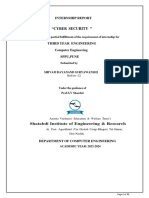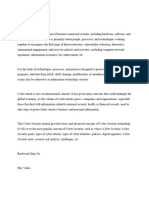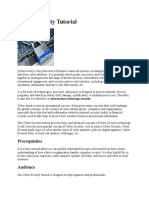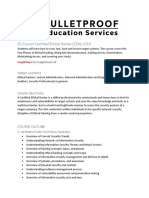0% found this document useful (0 votes)
47 views21 pagesCYBERSECURITYby Dipesh Jha
The document discusses cybersecurity and its importance for businesses. It covers key cybersecurity concepts like data breaches, risks, threats and vulnerabilities. It also discusses cybersecurity policies, procedures, encryption, end-to-end encryption, cloud security, and best practices for MBA students.
Uploaded by
dipesh104jhaCopyright
© © All Rights Reserved
We take content rights seriously. If you suspect this is your content, claim it here.
Available Formats
Download as PPTX, PDF, TXT or read online on Scribd
0% found this document useful (0 votes)
47 views21 pagesCYBERSECURITYby Dipesh Jha
The document discusses cybersecurity and its importance for businesses. It covers key cybersecurity concepts like data breaches, risks, threats and vulnerabilities. It also discusses cybersecurity policies, procedures, encryption, end-to-end encryption, cloud security, and best practices for MBA students.
Uploaded by
dipesh104jhaCopyright
© © All Rights Reserved
We take content rights seriously. If you suspect this is your content, claim it here.
Available Formats
Download as PPTX, PDF, TXT or read online on Scribd
/ 21



























































































